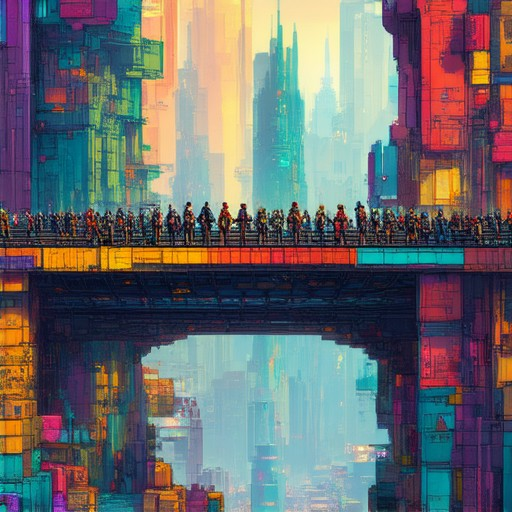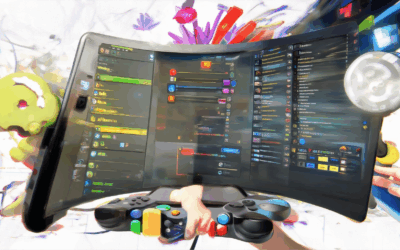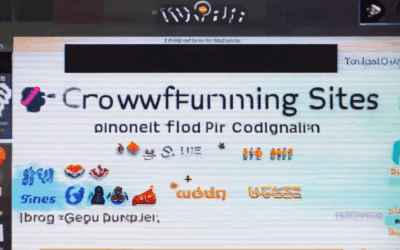Indie game development is a thrilling endeavor, but navigating the world of funding can feel overwhelming. Whether you’re just starting out or refining your strategy, understanding the ins and outs of indie game project funding is crucial. This comprehensive guide dives into the various sources, requirements, and platforms available to help you secure the resources needed to bring your vision to life. From exploring crowdfunding giants like Kickstarter to uncovering government grants and private investments, we’ll walk you through everything you need to know to fund your project wisely. With the right approach, your indie game can stand out in a crowded market and captivate audiences worldwide. Let’s get started and unlock the secrets to successful indie game project funding!
Key Takeaways
– Kickstarter is a powerful tool for indie game developers due to its ability to foster direct fan engagement, provide creative control, and build a loyal community.
– Successful Kickstarter campaigns can generate significant revenue and offer marketing support, helping indie games achieve visibility.
– Challenges on Kickstarter include competing with thousands of projects, managing risks, and delivering on promises to maintain trust.
– To succeed on Kickstarter, developers must understand their audience, create compelling content, and engage regularly with backers.
– Alternative platforms like Steam, itch.io, and Epic Games Store offer unique benefits for indie games, from high visibility to lower fees.
– Indie Game Academy provides comprehensive training in game development, with a focus on community support and career growth opportunities.

How Much Funding Does an Indie Game Need?
The funding requirements for an indie game can vary greatly depending on the project’s scope, complexity, and goals. Generally, indie games tend to fall into a range of approximately $10,000 to $100,000+ in funding. This estimate encompasses various expenses such as:
- Development Costs :
- Hiring a team (programmers, artists, designers) can significantly increase expenses.
- Using specialized tools, engines, and software may incur additional costs.
- Production Phase :
- Creating assets, level design, and testing requires time and resources.
- High-quality animations, 3D modeling, and sound design can elevate costs.
- Marketing and Distribution :
- Promoting the game through social media, influencers, and platforms like Steam.
- Budget for creating trailers, packaging, and initial marketing campaigns.
- Platform Distribution :
- Releasing on multiple platforms (PC, consoles, mobile) can increase costs due to platform-specific optimizations and certifications.
- Post-Launch Support :
- Ongoing expenses for updates, bug fixes, and player support.
Examples of successful indie games illustrate this range:- Undertale was developed by a solo creator with modest funding, while Hades required a larger team, increasing its budget.
Thus, while the average funding range is between $10,000 to $100,000+ , actual costs depend on the project’s scale and ambitions.
How Much Money Do Indie Game Developers Make?
As of July 2025, the average annual salary for an Indie Game Developer in the United States is approximately $108,471 per year. This translates to roughly $52.15 per hour, or about $2,085 weekly and $9,039 monthly. However, this figure can vary significantly based on several factors:
- Experience Level : Entry-level developers may earn less, starting around $60,000 annually, while experienced professionals can command upwards of $120,000 or more depending on their expertise and track record.
- Role Responsibilities : Different roles within indie development, such as game designers, artists, and programmers, have varying salary ranges. For instance, a skilled programmer might earn between $70,000 and $100,000 annually.
- Geographic Location : Income can differ widely by region. Developers in high-cost areas like San Francisco or New York may earn significantly more than those in smaller cities or rural areas.
- Project Success : Revenue from successful games can lead to substantial earnings, particularly through royalties. However, many indie games may not achieve commercial success, leading to variable income streams.
- Additional Income Sources : Many indie developers supplement their income through crowdfunding, grants, or part-time freelance work.
For more resources and insights into indie game development, visit Indie Dev Games , a comprehensive platform offering tutorials, reviews, and tips for aspiring game creators.

What is the indie game funding site?
An indie game funding site is an online platform designed to help independent game developers raise money for their projects. These platforms operate similarly to crowdfunding websites, allowing creators to pitch their ideas, showcase their games, and secure financial backing from interested fans or investors. The primary purpose of these sites is to connect game developers with potential supporters, fostering a community-driven approach to funding.
Top Indie Game Funding Sites
- Indiegogo
Indiegogo is one of the most well-known crowdfunding platforms for indie games. It offers a user-friendly interface where developers can describe their projects, set funding goals, and share updates with backers. The platform is known for its flexibility, allowing creators to keep funds raised even if they fall short of their target. - Kickstarter
Kickstarter has become a go-to platform for many indie game developers. Its all-or-nothing funding model requires projects to meet their fundraising goals to receive the pledged money. However, successful campaigns often lead to long-term supporter relationships and community engagement. - Patreon
While primarily a subscription-based platform, Patreon has become a vital tool for indie game developers. Creators can offer exclusive content, early access, and other perks in exchange for monthly contributions. This model fosters ongoing support from fans and provides consistent revenue for developers. - Gamefound
Gamefound is specifically designed for video game projects, offering tailored features for indie developers. The platform emphasizes transparency and accountability, allowing backers to track project progress and communicate directly with developers. - Crowdfund Insider (CFI)
CFI focuses on video game crowdfunding and provides detailed analytics and insights for creators. The platform helps developers understand their audience better and optimize their fundraising strategies.
Choosing the Right Platform
When selecting an indie game funding site, consider factors like the project size, funding model, and community engagement features. Platforms like Indiegogo and Kickstarter cater to broader audiences, while specialized sites like Gamefound may better suit niche or specific project needs. Evaluate each platform’s fees, success rates, and user base to find the best fit for your project.
By leveraging these platforms, indie game developers can secure the resources necessary to bring their creative visions to life, ensuring that their games have the potential to thrive in the competitive gaming market.

Is Kickstarter Good for Indie Games?
Kickstarter has become a powerful tool for indie game developers to raise funds, engage fans, and build communities. Here’s why it’s an excellent platform for indie games:
- Direct Fan Engagement: Kickstarter allows indie developers to connect directly with potential players, showcasing their game’s concept, progress, and vision. This early interaction helps build a loyal fanbase and creates buzz around the project.
- Creative Control: Unlike traditional investors, Kickstarter backers are passionate about the project. This funding model gives developers creative freedom without compromising on their vision.
- Community Building: By involving fans in the development process through updates and rewards, indie games can foster a dedicated community that feels invested in the project’s success.
- Marketing Support: Kickstarter campaigns often come with built-in marketing tools, helping indie games reach a wider audience and gain visibility in the gaming community.
- Revenue Potential: Successful campaigns can generate substantial revenue, providing indie developers with the means to further develop their games and explore new projects.
Challenges to Consider
- Competition: With thousands of projects vying for attention, standing out requires a compelling story, high-quality visuals, and clear communication.
- Risk Management: Funding goals must be realistic, and developers must prepare for all outcomes, including the possibility of not meeting the goal.
- Delivery Pressure: Once funded, delivering on promises can be stressful, requiring careful planning and execution to maintain trust and reputation.
How to Succeed on Kickstarter
- Know Your Audience: Understand who your potential backers are and tailor your campaign to appeal to their interests and motivations.
- Engage Regularly: Update backers frequently, show progress, and involve them in decisions to keep them excited and invested.
- Leverage Multiple Platforms: Combine your Kickstarter campaign with platforms like Steam to maximize visibility and build a broader audience.
Create Compelling Content: Use high-quality visuals, storytelling, and clear messaging to capture attention and convey the game’s unique value proposition.
Indie games have consistently proven that Kickstarter can be a powerful tool for success. By leveraging the platform’s strengths and addressing its challenges thoughtfully, many indie developers have launched successful games and grown their careers.
The Best Platforms for Indie Games
When considering the best platforms for indie games, several options stand out based on their support for developers, community engagement, and reach:
- Steam : As the largest digital distribution platform, Steam is a go-to for indie games. While it may have higher fees for smaller developers, its vast user base ensures visibility and accessibility.
- itch.io : Known for its community-driven approach, itch.io supports indie developers with lower fees and a focus on experimental and unique games, making it ideal for those seeking alternative platforms.
- GameJolt : Specializing in indie games, GameJolt has a strong modding community and caters to specific genres, offering a supportive environment for developers.
- Kongregate : This platform offers a mix of indie and mainstream games, providing visibility and exposure through its established user base, though it may charge higher fees.
- Epic Games Store : With a developer-friendly revenue model, Epic Games Store has become a popular choice for indie developers, offering better terms and support.
Each platform has unique advantages, from fee structures and community focus to supported platforms and genres. Developers should carefully evaluate their needs, budget, and target audience to choose the platform that aligns best with their goals.

Is Indie Game Academy Worth It?
Indie Game Academy offers a comprehensive learning experience tailored for aspiring game developers. Below is a detailed analysis to help you determine if it aligns with your goals and preferences.
Courses and Curriculum
The academy provides a variety of courses designed to cater to different skill levels. From introductory lessons on game development basics to advanced topics like 3D modeling and programming, there’s something for everyone. Key subjects include:
- Game Design Principles
- Level Design
- Game Engines (Unity, Unreal Engine)
- 2D and 3D Programming
- Art and Animation
- Marketing and Distribution
Community and Support
One of the standout features of Indie Game Academy is its vibrant community. Students gain access to forums, project showcases, and collaborative environments. This fosters networking opportunities and inspiration, helping members grow both individually and collectively.
Job Opportunities and Career Growth
Indie Game Academy emphasizes preparing students for real-world challenges in the gaming industry. Through partnerships with game studios and participation in competitions, students can build portfolios, gain feedback, and potentially secure employment opportunities.
Cost and Value
The cost of enrollment varies based on the selected plan, but the investment is justified by the resources and support provided. Compared to other platforms like Unity Academy and Unreal Engine Training, Indie Game Academy often includes additional benefits such as mentorship programs and access to exclusive tools.
Competitors and Alternatives
While Indie Game Academy stands out, it’s essential to consider alternatives like:
- Unity Academy – Strong focus on game engine utilization
- Unreal Engine Training – Advanced 3D development expertise
- Online communities and free resources (e.g., GitHub, Stack Overflow)
Each option has its strengths, so your choice depends on your career goals and preferred learning style.
Conclusion
Indie Game Academy is a worthwhile investment for those committed to pursuing a career in game development. Its holistic approach, supportive community, and practical applications make it a valuable resource in the competitive gaming industry.
Whether you’re just starting out or looking to refine your skills, Indie Game Academy provides the tools and environment needed to succeed. Visit our website to explore courses and join our growing community today!
Explore Indie Game Academy




0 Comments